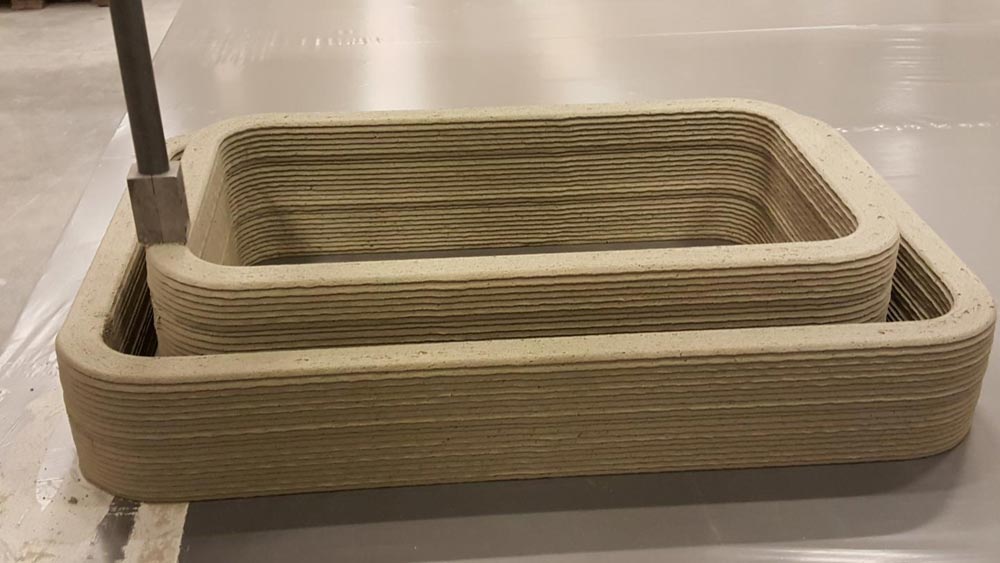
Suiker's equations prevent 3-D-printed walls from collapsing or falling over

These are rectangular shapes printed at the TU Eindhoven 3-D-concrete printer. Suiker elaborated his equations for rectangular layouts like these.
Credit: Rob Wolfs/Eindhoven University of Technology
Conventional concrete deposited in formwork typically is allowed to harden over period of several weeks. But 3D-printed concrete is not. With no supporting formwork, it almost immediately has to bear the weight of the subsequent layers of concrete that are printed on top of it.
Everybody can feel the tension rising in their body as the structure gets higher. Is it already stiff and strong enough to add yet another layer on top? It is one of the most important issues in the new field of 3D printing.
This issue was not part of the package of tasks of Professor Akke Suiker, who regularly saw the king-sized concrete printer of his university in action on the way to his office. But on a Saturday morning last March he woke up with an exciting idea how to solve the problem, already jotting down the first mathematical equations on paper during breakfast.
In the six months that follow Suiker is completely occupied by the problem, working feverishly on the details. The results are published this week in the International Journal of Mechanical Sciences (1.
Using his equations, Suiker is able to calculate how quickly he can lay down printing layers, given the material curing characteristics and wall dimensions – of course without the structure collapsing. But he can also calculate how to make the structure with as little material as possible, and what the influence of structural irregularities is.
Or what happens when he makes a wall slightly thicker or increases the material curing rate, or uses a completely different material. Or if the wall has a tendency just to fall over or also pulls the connecting structure with it. In the latter case, the consequential damage that occurs clearly is considerably greater. In fact, there are about 15 to 20 factors that one has to take into account, but because Suiker has conveniently scaled his equations, he was ultimately left with just five dimensionless parameters. Hence the problem is tackled with a very elegant and insightful model.
When asked whether his results will be important for the field of 3D printing, Suiker is without doubt. “They should be. The insights provided by the model create essential basic knowledge for everyone who prints 3D structures. For structural designers, engineering firms but also, for example, for companies that print thin-walled plastic prostheses of small dimensions, because that is where my equations also apply.” The first interest is already there: he has been invited by Cambridge University to give a seminar lecture about his work.
Suiker validated his model with results of tests done with the 3D concrete printer at Eindhoven University of Technology, carried out by PhD student Rob Wolfs. He developed a computer model at the same time as Suiker, with which he can also calculate the structural behavior during the printing process, but based on the finite-element method (2. It is great for both researchers that the results from their independently developed models confirm each other.
Wolfs' model is different in terms of application. It works well for a detailed analysis of complex problems under specific printing conditions, but due to the purely numerical character and the requested computing time it is not so suitable for identifying the most important effects of the printing process, and for mapping out overall trends.
###
(1 Mechanical performance of wall structures in 3D printing processes: Theory, design tools and experiments. A.S.J. Suiker. International Journal of Mechanical Sciences
DOI: https:/
(2 Early age mechanical behaviour of 3D printed concrete: Numerical modelling and experimental testing. R.J.M. Wolfs, F.P. Bos, T.A.M. Salet, Cement and Concrete Research
DOI: https:/












